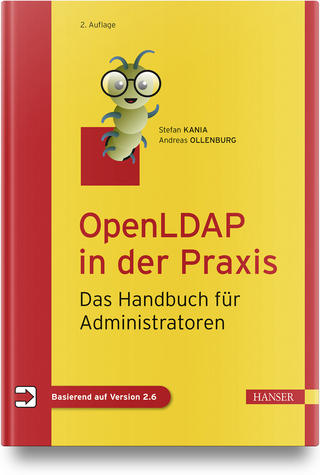
Intelligent Reflecting Surface-Aided Physical-Layer Security
Springer International Publishing (Verlag)
978-3-031-41811-2 (ISBN)
This book discusses the problems of Physical Layer Security (PLS) in Intelligent Reflecting Surface (IRS)-assisted wireless networks.
It also discusses the corresponding methods to solve these problems in a comprehensive style. Furthermore, some potential challenges are well analyzed.
This book is divided into 11 chapters. Chapter 1 introduces the propagation characteristics of IRS-aided PLS communications. From Chapter 2 to Chapter 10,
The authors mainly provide deep investigations of different PLS problems of IRS-aided wireless networks, namely, directional modulation (DM) networks. Chapter 11 draws a conclusion and includes the future research directions.
Researchers working in wireless communications, or advanced-level computer science or electrical engineering students, can learn about secure communication in the physical layer through our book.
Professionals or engineers working in this field will also benefit from this book.
lt;b>Feng Shu received the Ph.D. degree in Information and Communication Engineering from Southeast University, China, in 2002. From September 2009 to September 2010, he was a Visiting Post-doctor with the University of Texas at Dallas, Richardson, TX, USA. From October 2005 to November 2020, he was with the School of Electronic and Optical Engineering, Nanjing University of Science and Technology, Nanjing, where he was promoted from Associate Professor to a Full Professor of supervising Ph.D. students in 2013. Since December 2020, he has been with the School of Information and Communication Engineering, Hainan University, Haikou, China, where he is currently a Professor and supervisor of Ph.D. and graduate students. His research interests include wireless networks, wireless location, and array signal processing. He is awarded with the Leading-talent Plan of Hainan Province in 2020, Fujian hundred-talent plan of Fujian Province in 2018, and Mingjian Scholar Chair Professor in 2015. He has authored or coauthored more than 300 in archival journals with more than 120 papers on IEEE Journals and 200 SCI-indexed papers. His citations are 4386. He holds thirty Chinese patents and also are PI or CoPI for seven national projects. He was an IEEE Transactions on Communications Exemplary Reviewer for 2020. He is currently the Editor of IEEE Wireless Communications Letters and was an editor for the IEEE Systems Journal.
Jiangzhou Wang is a professor with the University of Kent, U.K. He has published more than 400 papers and four books. His research focuses on mobile communications. He was a recipient of the 2022 IEEE Communications Society Leonard G. Abraham Prize and IEEE Globecom2012 Best Paper Award. He was the Technical Program Chair of the 2019 IEEE International Conference on Communications (ICC2019), Shanghai, Executive Chair of the IEEE ICC2015, London, and Technical Program Chair of the IEEE WCNC2013. He is/was the editor of a number of international journals, including IEEE Transactions on Communications from 1998 to 2013. Professor Wang is a Fellow of the Royal Academy of Engineering, U.K., Fellow of the IEEE, and Fellow of the IET
Contents 1 Intelligent Reflecting Surface-aided Physical-layer Security Communications.- 1.1 Overview of Physical-layer Security.- 1.2 Overview of Intelligent Reflecting Surface.- 1.3 Organization of the Monograph.- References.- 2 Enhanced Secrecy Rate Maximization for Directional Modulation Networks via IRS.- 2.1 Introduction.- 2.2 System Model.- 2.3 Proposed high-performance GAI-based Max-SR method.- 2.3.1 Optimize the beamforming vectors v1 and v2 given the IRS phase-shift matrix .- 2.3.2 Optimize IRS phase-shift matrix given the beamforming vectors.- 2.3.3 Overall Algorithm.- 2.4 Proposed low-complexity NSP-based Max-SR method.- 2.4.1 Optimization of beamforming vectors given IRS phase-shift matrix .- 2.4.2 Optimization of IRS phase-shift matrix with given beamforming vectors.- 2.4.3 Overall Algorithm.- 2.5 Simulation and Discussion.- 2.5.1 Impact of the Number of IRS Phase-shift.- 2.5.2 Impact of the IRS Location.- 2.6 Conclusion..- References.- Contents 3 High-performance Estimation of Jamming Covariance Matrix for IRS-aided Directional Modulation Network with a Malicious Attacker.- 3.1 Introduction.- 3.2 System Model.- 3.3 Proposed Three Estimation Methods.- 3.3.1 Proposed EVD method.- 3.3.2 Proposed PEM-GD method.- 3.3.3 Proposed PEM-AO method.- 3.3.4 Computational Complexity Analysis and CRLBs.- 3.4 Simulation results and Discussions.- 3.5 Conclusion.- References.- 4 Beamforming and Power Allocation for Double-IRS-aided Two-Way Directional Modulation Network.- 4.1 Introduction.- 4.2 System Model and Problem Formulation.- 4.3 Proposed Transmit Beamforming Methods.- 4.3.1 Proposed GPG Method of Synthesizing the Phase-Shifting Matrices at Two IRSs.- 4.3.2 Proposed Max-SV Method.- 4.3.3 Generalized leakage method 4.4 Proposed HICF Power Allocation Strategy.- 4.4.1 Problem formulation.- 4.4.2 2D-ES and 1D-ES PA strategies.- 4.4.3 Proposed HICF PA strategy.- 4.5 Simulation Results andDiscussions.- 4.6 Conclusion.- 4.7 Appendix.- References.- 5 Beamforming and Transmit Power Design for Intelligent Reconfigurable Surface-aided Secure Spatial Modulation.- 5.1 Introduction.- 5.2 System Model.- 5.2.1 IRS-Aided Secure Spatial Modulation System.- 5.2.2 Problem Formulation.- 5.3 Approximation of the Ergodic Mutual Information.- 5.3.1 Traditional Approximate Secrecy Rate Expression.- 5.3.2 Proposed Newly Approximate Secrecy Rate Expression.- 5.4 Beamforming Design for given transmit power based on Approximate expression of SR.- 5.4.1 Proposed Max-NASR-SCA.- 5.4.2 Proposed Max-NASR-DA.- 5.4.3 Proposed Max-TASR-SDR method.- 5.5 Transmit Power Design for Given Beamforming based on Approximate Expression of SR.- 5.5.1 Transmit Power Design based on Proposed NASR.- 5.5.2 Transmit Power Design based on TASR.- 5.6 Complexity Analysis.- 5.7 Simulation Results and Analysis.- 5.7.1 Rayleigh fading channel.- 5.7.2 Rayleigh fading channel considering path loss.- 5.8 Conclusion.- References.- 6 IRS-Aided Covert Wireless Communications with Delay Constraint.- 6.1 Introduction.- 6.2 System Model.- 6.2.1 Considered Scenario and Assumptions.- 6.2.2 Binary Hypothesis Testing at Willie.- 6.2.3 Transmission from Alice to Bob.- 6.3 Covert Communication Design with Global Channel State Information.- 6.3.1 Optimization Problem and Perfect Covertness Condition.- 6.3.2 Joint Transmit Power and Reflect Beamforming Design.- 6.3.3 Low-Complexity Algorithm.- 6.4 Covert Communication Design without Willie's instantaneous CSI.- 6.4.1 Expression for Covertness Constraint.- 6.4.2 Optimal Design without Willie's Instantaneous CSI.- 6.5 Numerical Results.- 6.5.1 With Global CSI.- 6.5.2 Without Willie's Instantaneous CSI.- 6.6 Conclusion.- 6.7 Appendix.- 6.7.1 Proof of Theorem 6.1.- 6.7.2 Proof of Lemma 6.1.- 6.7.3 Proof of Theorem 6.2.- References.- 7 Intelligent Reflecting Surface Aided Secure Transmission with Colluding Eavesdroppers.- 7.1 Introduction.- 7.2 System Model and Problem Formulation.- 7.3 Proposed Solutions.- 7.3.1 SDR-Based Method.- 7.3.2 Proposed LC-AO Algorithm.- 7.4 Simulation Results.- 7.5 Conclusion.- References.- 8 Secure Multigroup Multicast Communication Systems via Intelligent Reflecting Surface.- 8.1 Introduction.- 8.2 System Model.- 8.3 SDR-based Alternating Optimization Method.- 8.3.1 Optimization with respect to {W , Q}.- 8.3.2 Optimization with respect to U.- 8.3.3 Overall Algorithm and Complexity Analysis.- 8.4 Low-complexity SOCP-based Algorithm.- 8.4.1 Optimization with respect to beamforming vector and AN.- 8.4.2 Optimization with respect to phase shifts.- 8.4.3 Overall Algorithm and Complexity Analysis.- 8.5 Simulation and analysis.- 8.6 Conclusion.- References.- 9 Beamforming Design for IRS-aided Decode-and-Forward Relay Wireless Network.- 9.1 Introduction.- 9.2 System Model.- 9.3 Proposed Three High-Performance Beamforming Schemes.- 9.3.1 Proposed AIS-based Max-RP Method.- 9.3.2 Proposed NSP-based Max-RP plus MRC Method.- 9.3.3 Proposed IRSES-based Max-RP plus MRC Method.- 9.4 Numerical Results.- 9.5 Conclusion.- References.- 10 Performance Analysis of Wireless Network Aided by Discrete[1]Phase-Shifter IRS.- 10.1 Introduction..- 10.2 System Model.- 10.3 Performance Loss Derivation and Analysis in the LoS Channels.- 10.3.1 Derivation of Performance Loss in LoS Channels.- 10.3.2 Performance Loss of SNR at Bob.- 10.3.3 Performance Loss of Achievable Rate at Bob.- 10.3.4 Performance Loss of BER at Bob.- 10.4 Performance Loss Derivation and Analysis in the Rayleigh Channels.- 10.4.1 Derivation of Performance Loss in the Rayleigh Channels.- 10.4.2 Performance Loss of SNR at Bob.- 10.4.3 Performance Loss of Achievable Rate at Bob.- 10.4.4 Performance Loss of BER at Bob.- 10.5 Simulation Results and Discussions.- 10.6 Conclusion.- References.- 11 Conclusions and Future Research Directions.
| Erscheinungsdatum | 13.10.2023 |
|---|---|
| Reihe/Serie | Wireless Networks |
| Zusatzinfo | XXII, 234 p. 74 illus., 73 illus. in color. |
| Verlagsort | Cham |
| Sprache | englisch |
| Maße | 155 x 235 mm |
| Gewicht | 553 g |
| Themenwelt | Mathematik / Informatik ► Informatik ► Netzwerke |
| Schlagworte | Beamforming • Channel state information • Covert Communications • decode-and-forward relay • directional modulation • Intelligent Reflecting Surface • Physical Layer Security • power allocation • secrecy rate • secure multigroup multicast • Spatial modulation • transmit power design |
| ISBN-10 | 3-031-41811-5 / 3031418115 |
| ISBN-13 | 978-3-031-41811-2 / 9783031418112 |
| Zustand | Neuware |
| Informationen gemäß Produktsicherheitsverordnung (GPSR) | |
| Haben Sie eine Frage zum Produkt? |
aus dem Bereich


